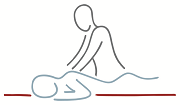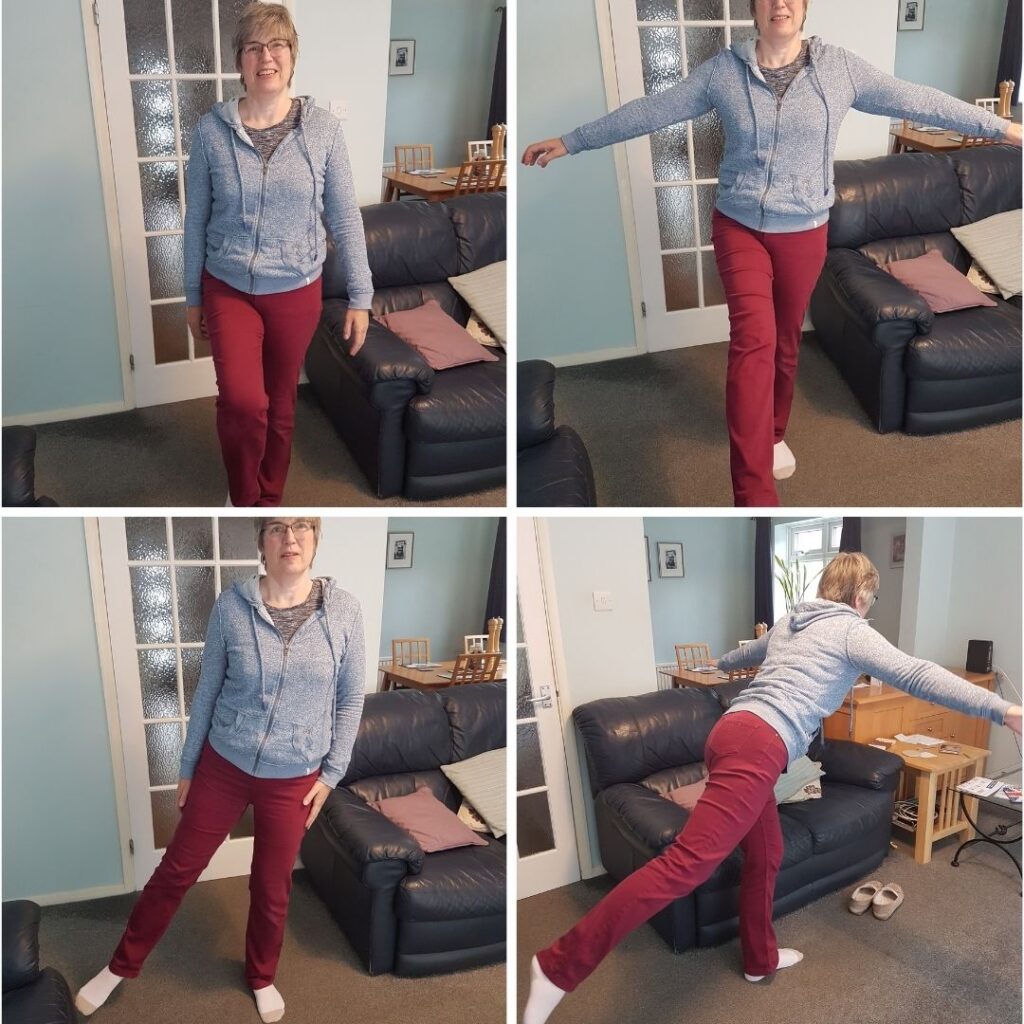Proprioception:
Proprioception is the sense of knowing the relative position of ones’ body in space. It is necessary to maintain posture and balance and helps us to co-ordinate movements. The information needed for the brain to know where parts of the body are located without the eyes seeing is provided by proprioceptors. These are located in muscles, tendons and joints. When muscles and joints are damaged nerve endings and pathways are also damaged and the proprioceptive ability can be lost. This may result in impaired balance, decreased co-ordination or a tendency for joints to give way. Any of these may leave you prone to further injury.
Problems are most common with damage to the lower limb joints (ankle, knee) although it can also happen with shoulder and arm injuries. Specific rehabilitation exercises are needed to re-train this sense. These proprioceptive exercises should begin as early as possible in the rehabilitation program as this type of neuromuscular training acts to restore the body’s awareness and is not stressful to the repairing tissues. These exercises usually consist of some kind of balancing task if training the legs. Standing on one leg, standing on tip toes, using a balance board, single leg squats will all improve balance and the proprioceptive sense. For the arms, exercises would include weight bearing exercises in different positions (press ups seated, kneeling, against the wall) to gain input from hand, wrist elbow and shoulder. It is useful to include proprioceptive training into your regular regime on an ongoing basis to aid in injury prevention.
Balance:
Balance is a skill that we learn. It needs to be maintained and practised throughout our lives to enable us to stay on our feet and participate in the activities that we enjoy. From learning to walk, putting on your trousers (standing on one leg) to running, jumping or dancing, good Balance is necessary for everyone.
In general, Balance is the co-ordination between muscles. The body uses special “proprioceptive” receptors to send signals to and from the brain that tell the muscles how and when to work. If you are upright, this is happening continuously in order to maintain your posture. Even seated, your muscles must maintain the balance in your upper body and co-ordinate your arm and head movements.
Realistically, there are two kinds of balance:
Static balance is the ability to maintain your centre of gravity (the majority of your weight) over your base of support (usually your feet). It enables you to maintain a position without moving or falling over. This could be simply sitting or standing but also includes most Yoga poses.
Dynamic balance is the ability to move your centre of gravity outside of your base of support and still remain in control. It’s balance in motion and is utilised when you walk, run, kick, spin or jump. With these kinds of activities, the majority of your body’s weight is located away from your base of support, requiring a much faster and powerful response from the muscle groups.
Both of these elements of balance are equally important and heavily influence each other. They are vital survival skills and need maintaining as we age because all of our muscles weaken ever so gradually after we hit 30. The length of our stride shortens, the pace of our steps slows, and vision becomes fuzzier. How well we keep our balance in midlife can protect us from what lies ahead. Approximately, one in three adults over age 65 takes a serious tumble each year. Avoiding falls often means a longer and better life and there are also immediate health benefits to improved mobility – fewer injuries, greater capacity to train hard during workouts and, therefore, an increase in overall fitness. These pictures show a few simple exercises that you can add into your day to help maintain these skills. Little and often is the key. Try to incorporate some balance work into your everyday routines so that it does not get forgotten.
Mobility and Stability
Our bodies need both Mobility and Stability to optimise performance and prevent injuries.
Mobility is ACTIVE. It is the ability to move your body at will without being restricted by stiffness or muscle imbalance. Dynamic warm ups help to improve your sense of proprioception and develop a better “feel” for your movements. This can lead to safer movement patterns. Manual therapy such as massage can improve muscle and connective tissue flexibility around joints which can improve mobility.
Stability keeps our joint movements under CONTROL, even when forces are applied through our muscles. Improving muscle control and balance around joints reduces stresses. All the muscles around a joint need to work effectively together to stabilise it. Deliberate practice of activity specific movements can create better body control and more stable motion. Co-ordination and precision are key when performing these exercises.
Common imbalances occur in the postural muscles of back and glutes along with strength differences between Quads and Hamstrings. Activating and strengthening your core and glutes can significantly reduce injury risk in most sports.
If you have any questions or need some advice, please get in touch.

